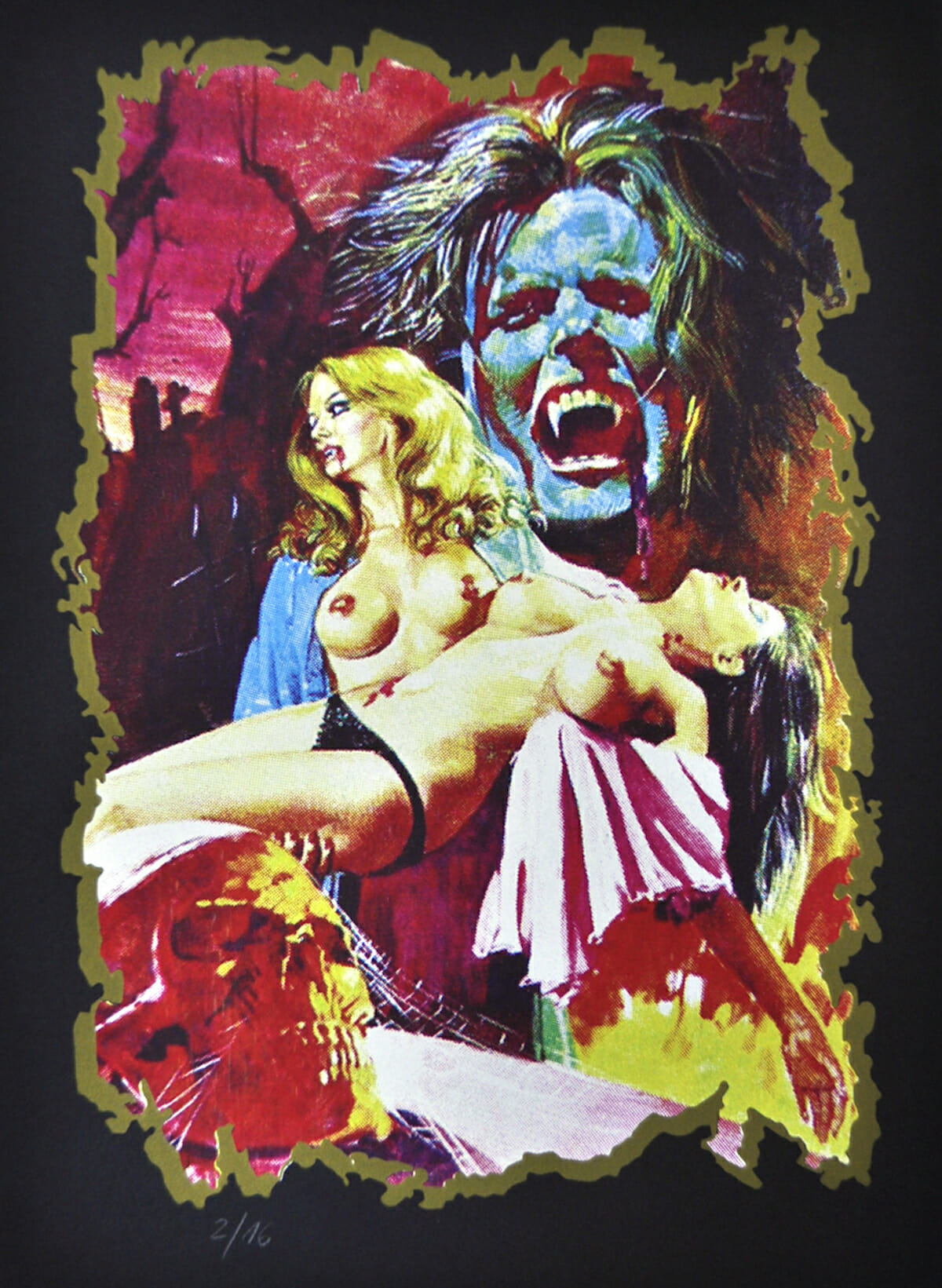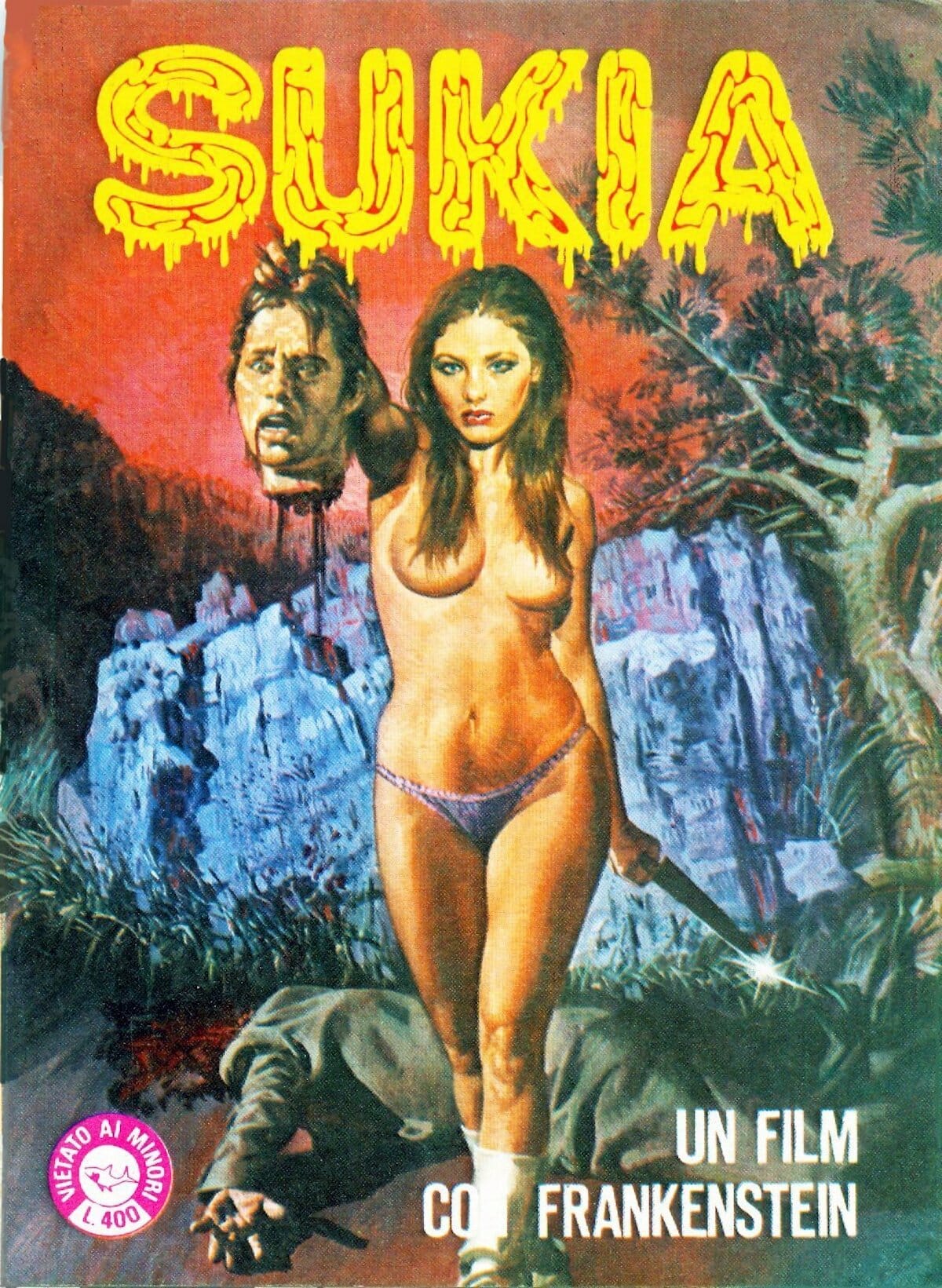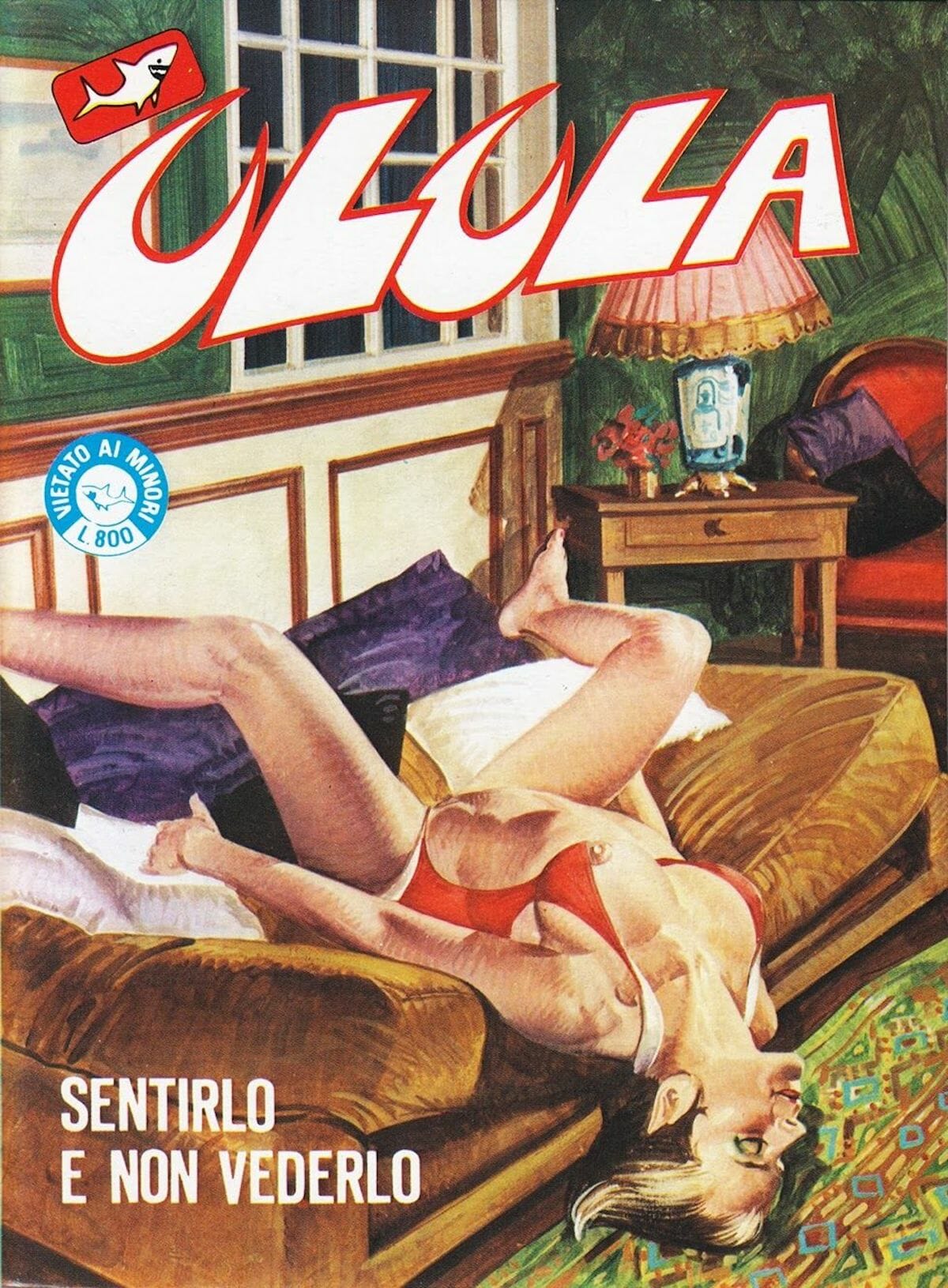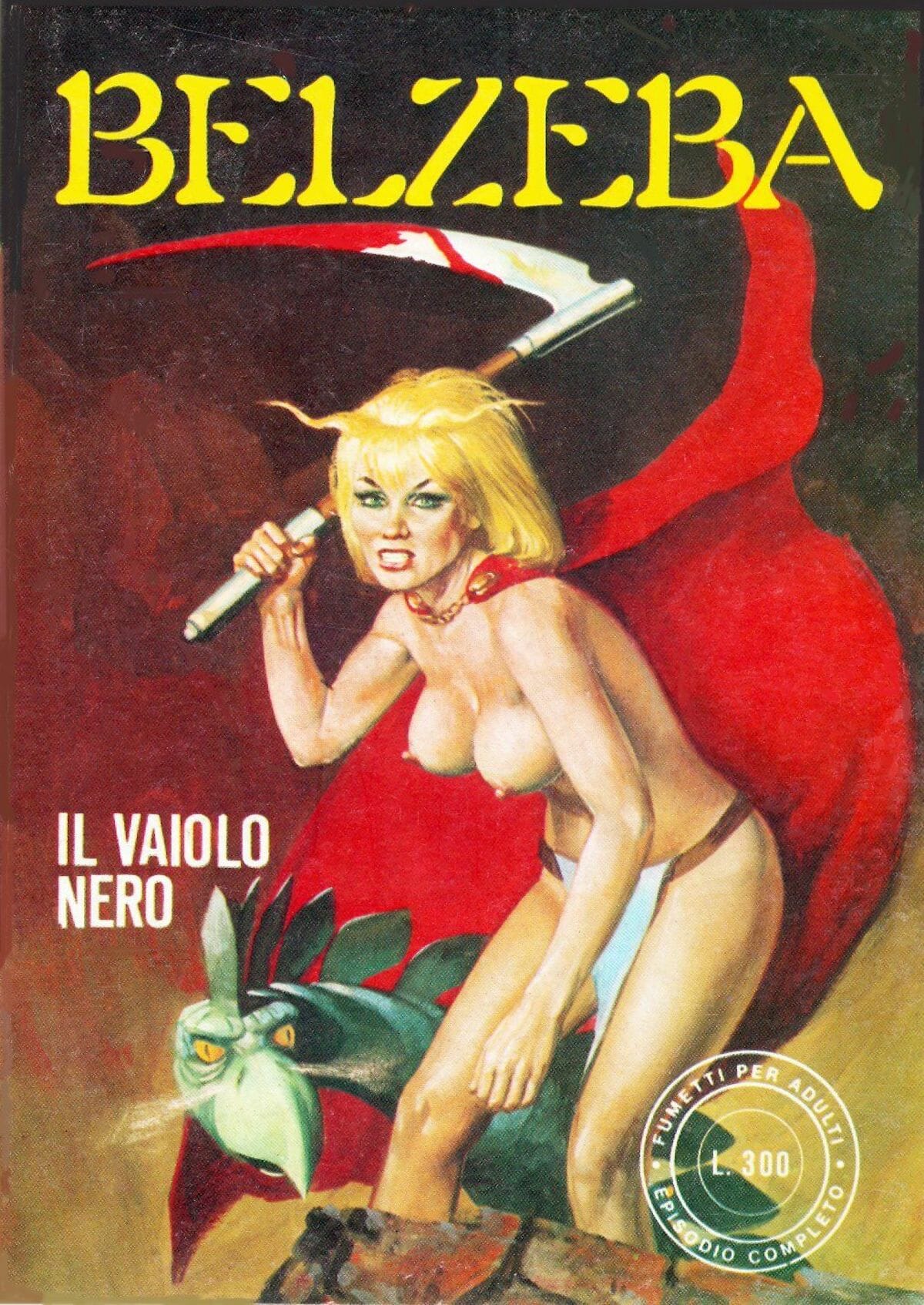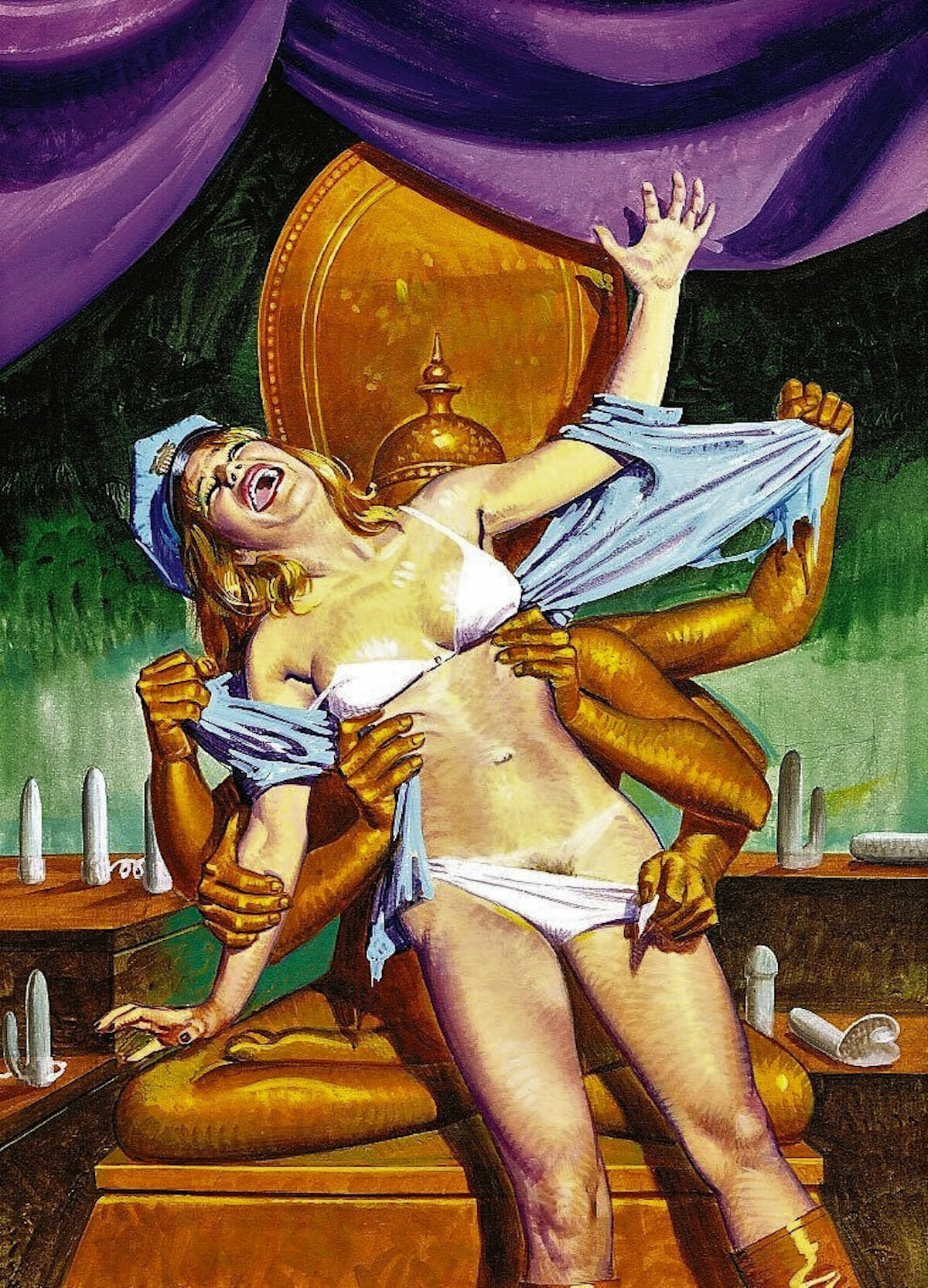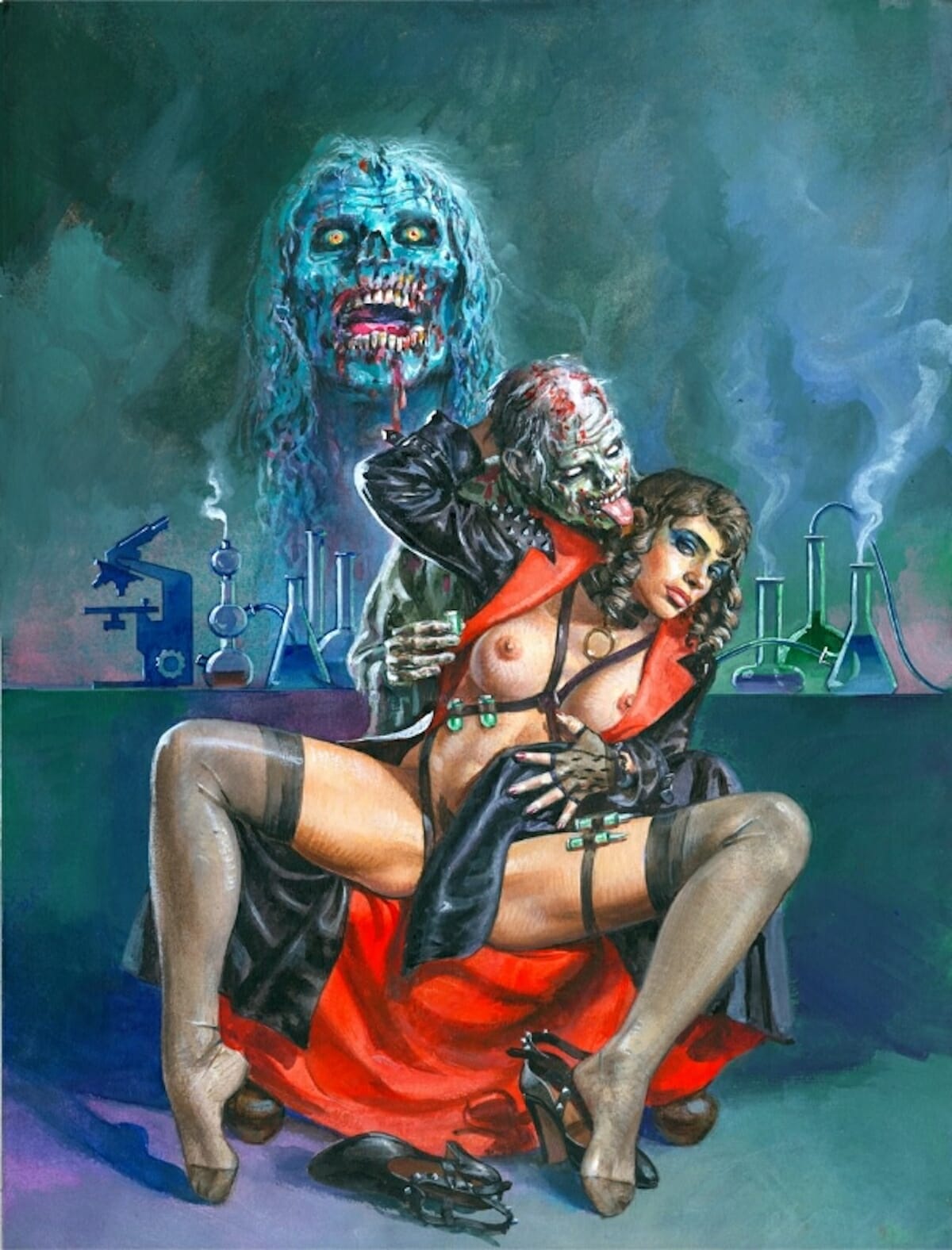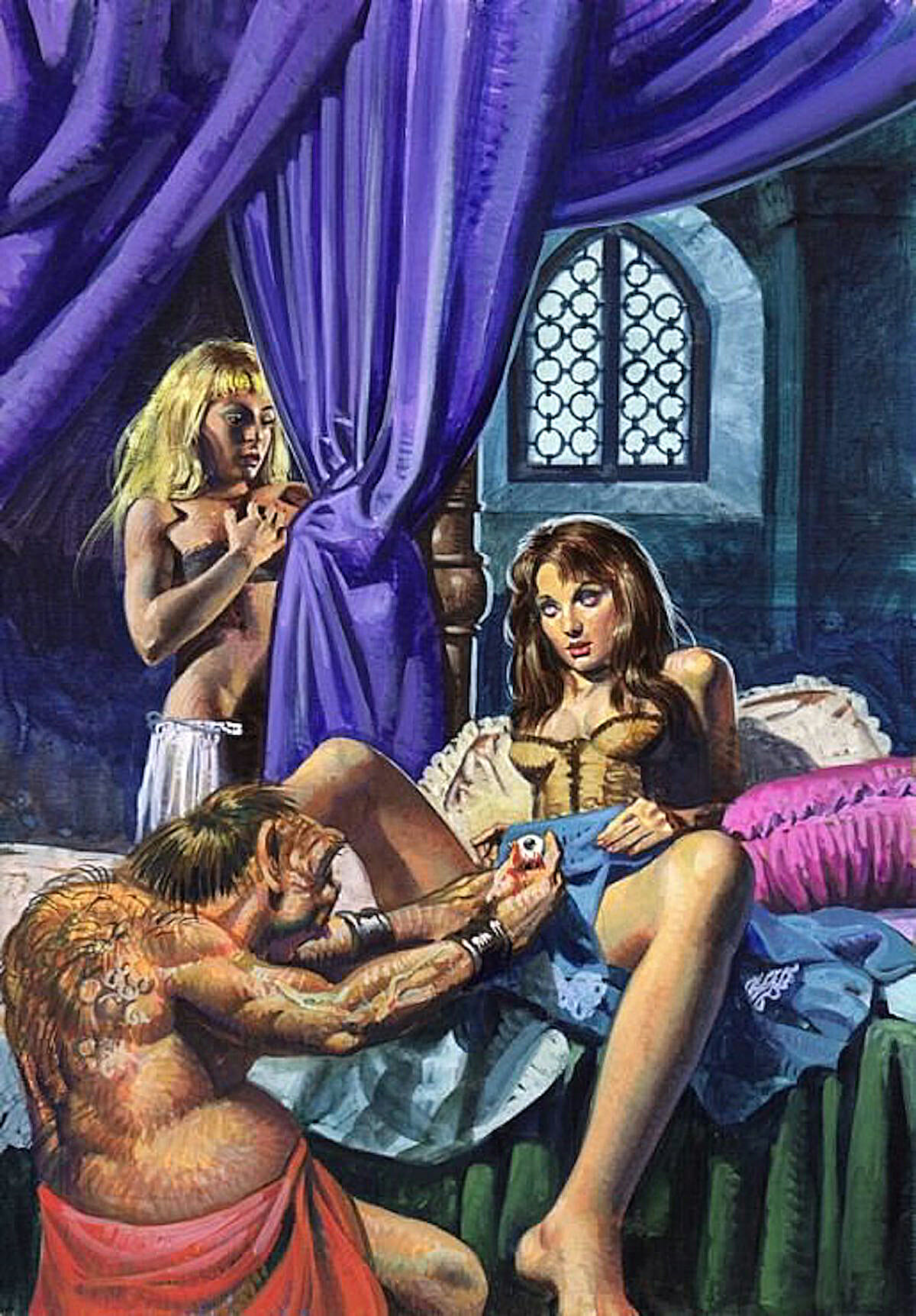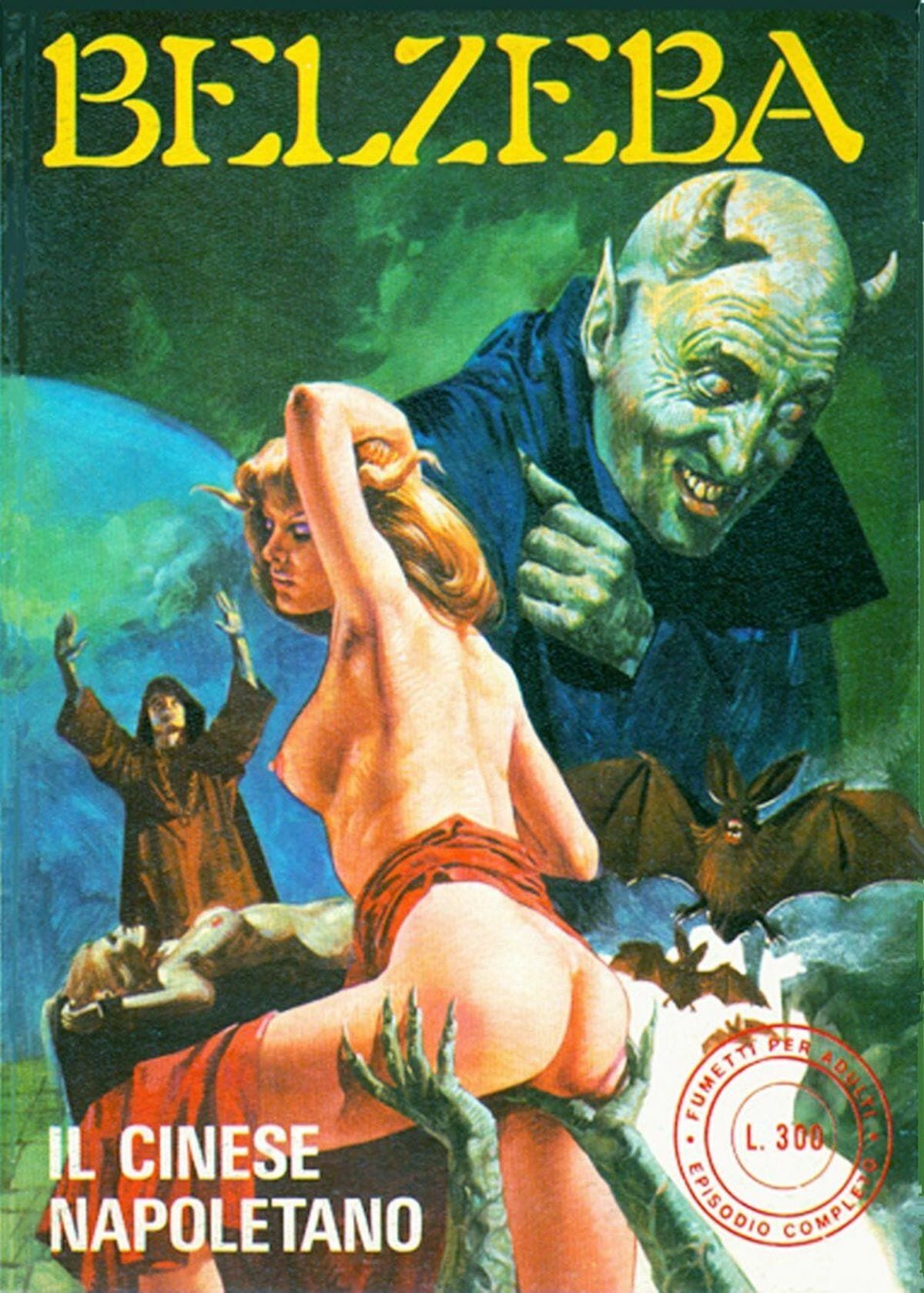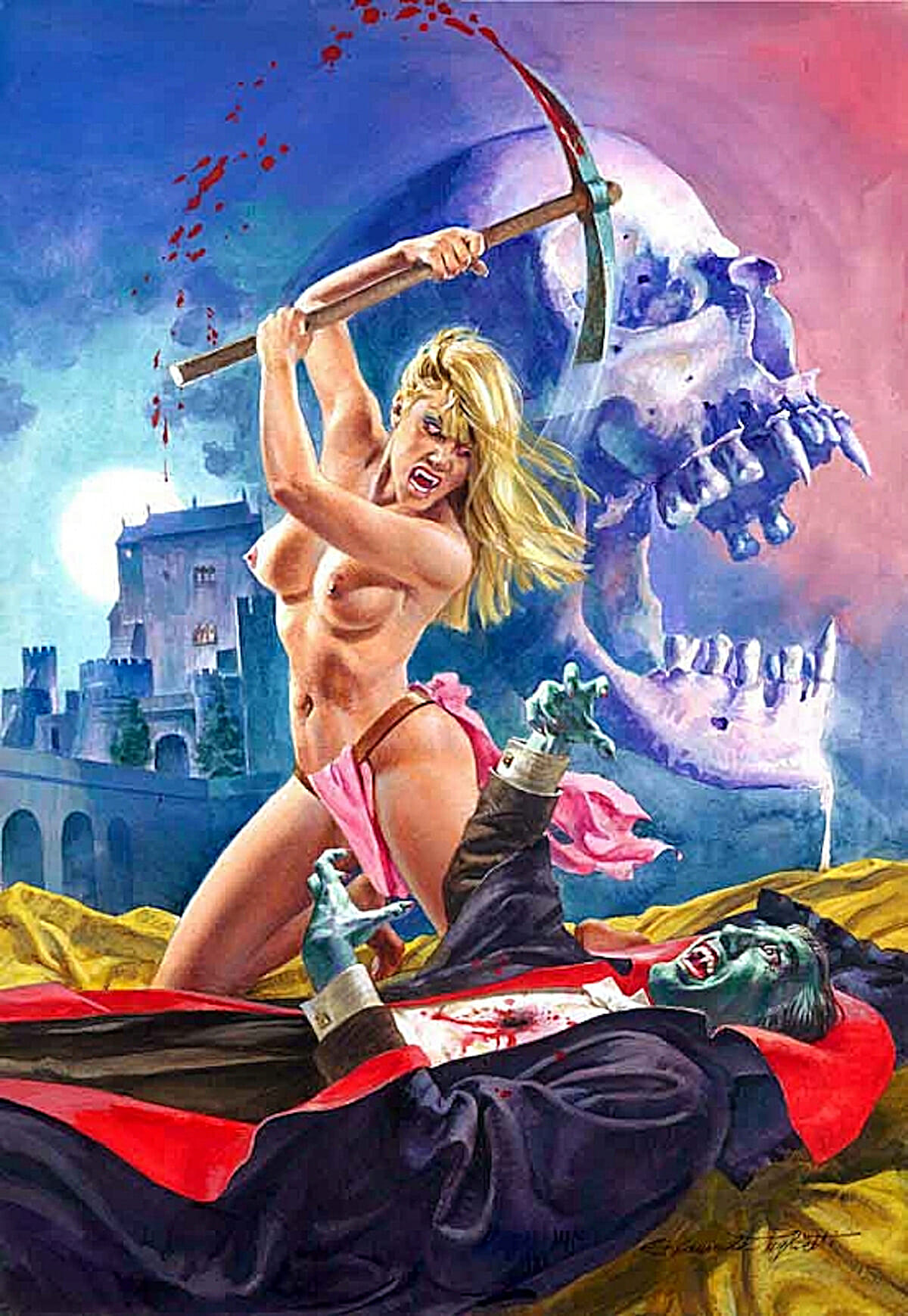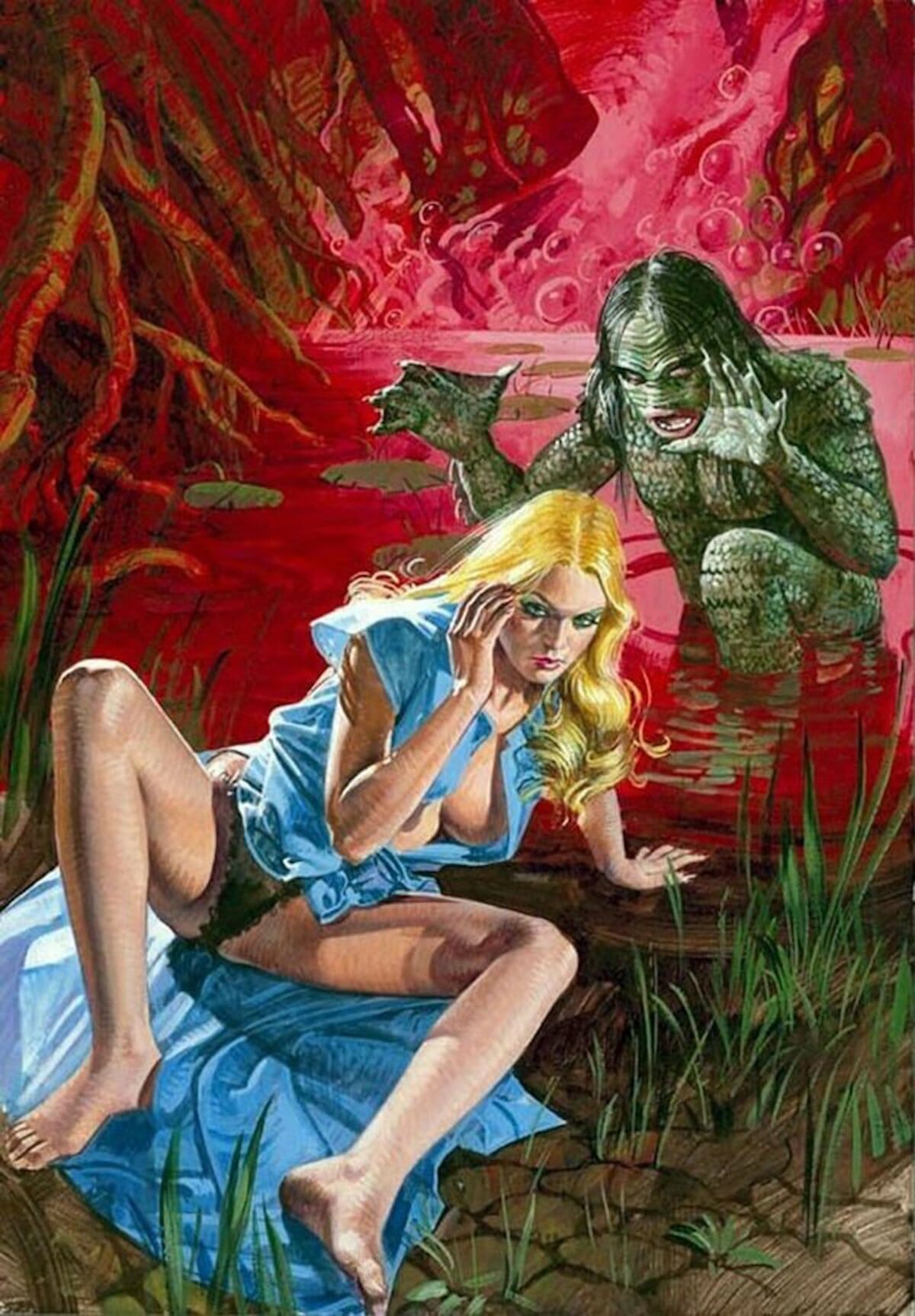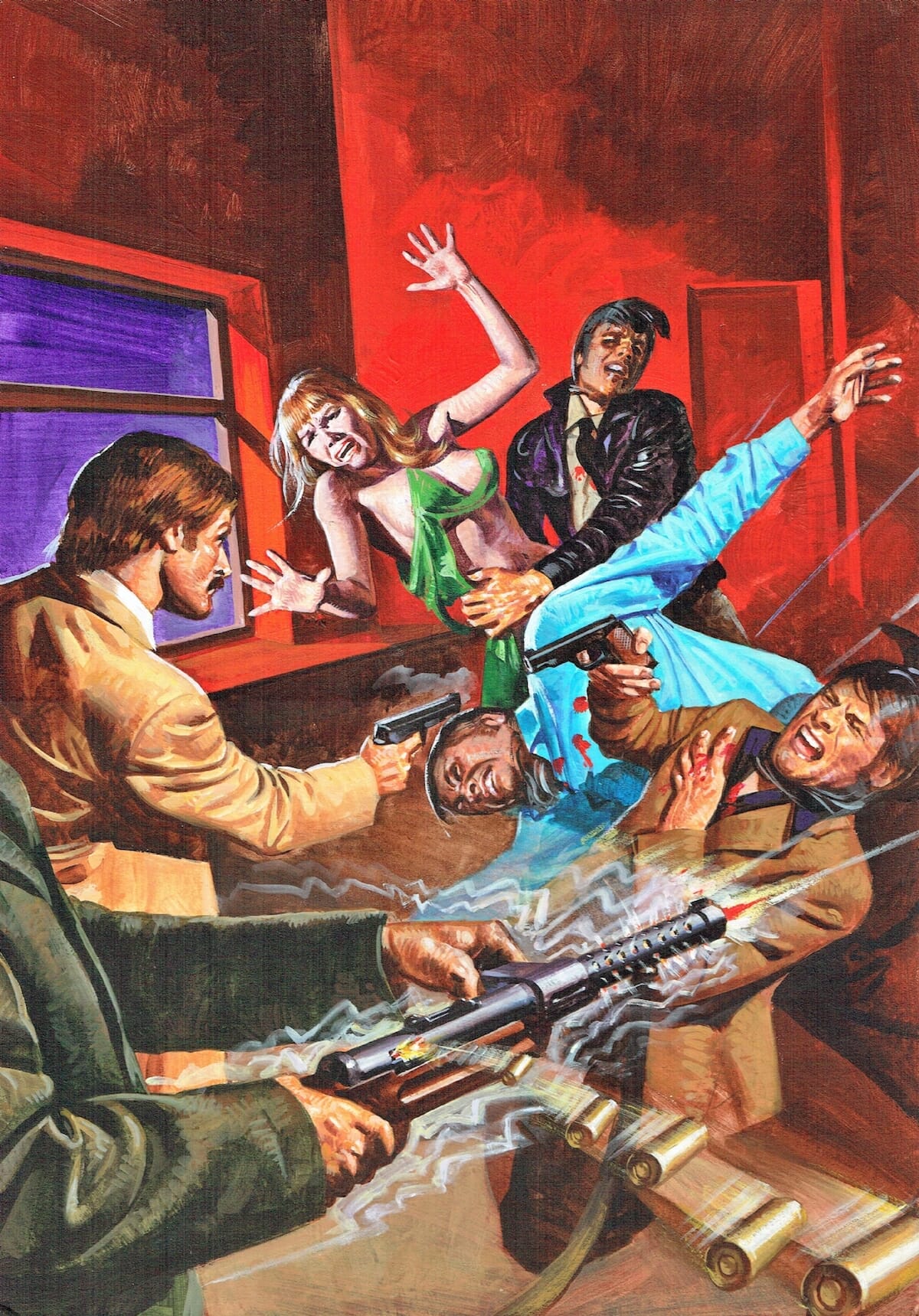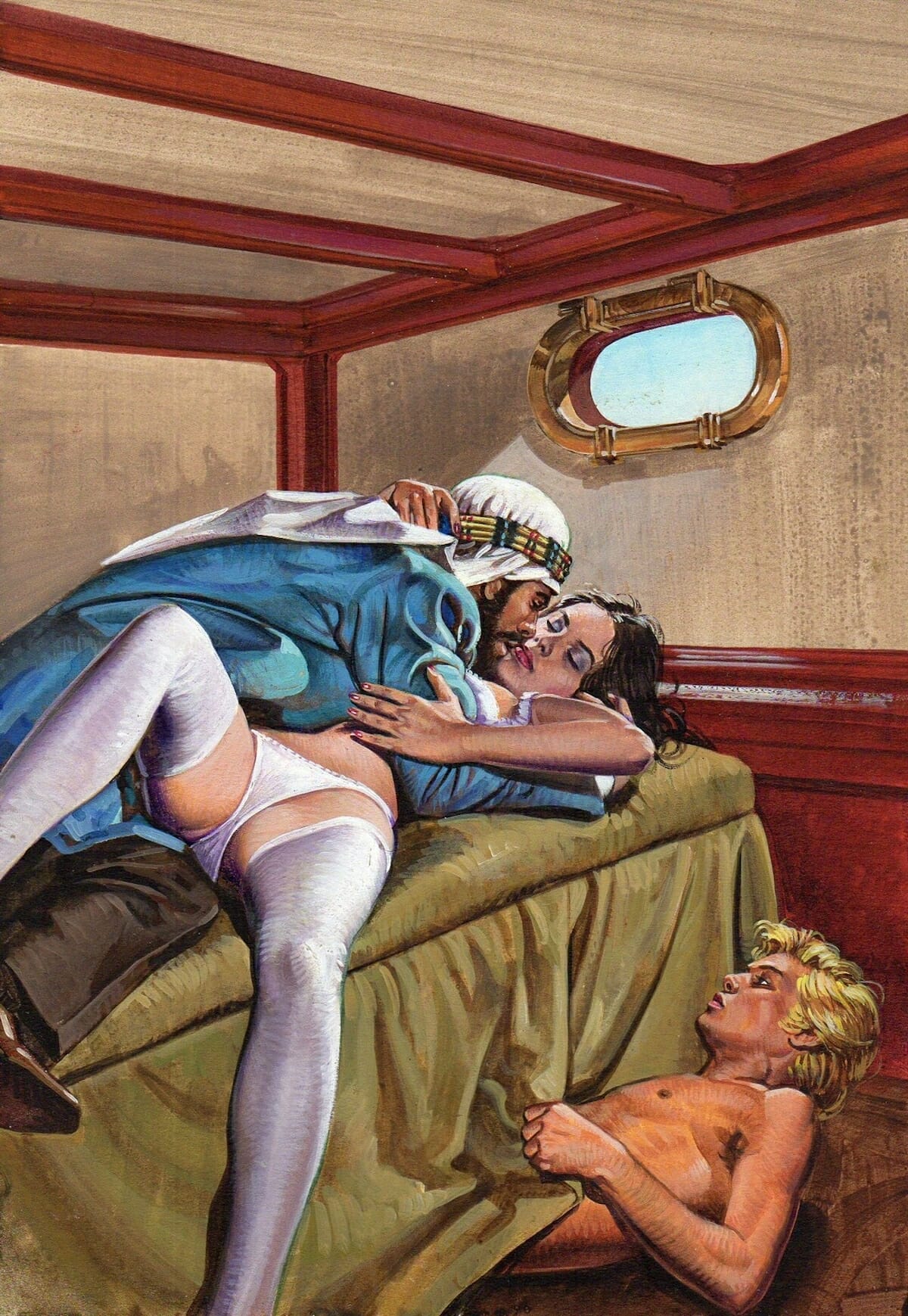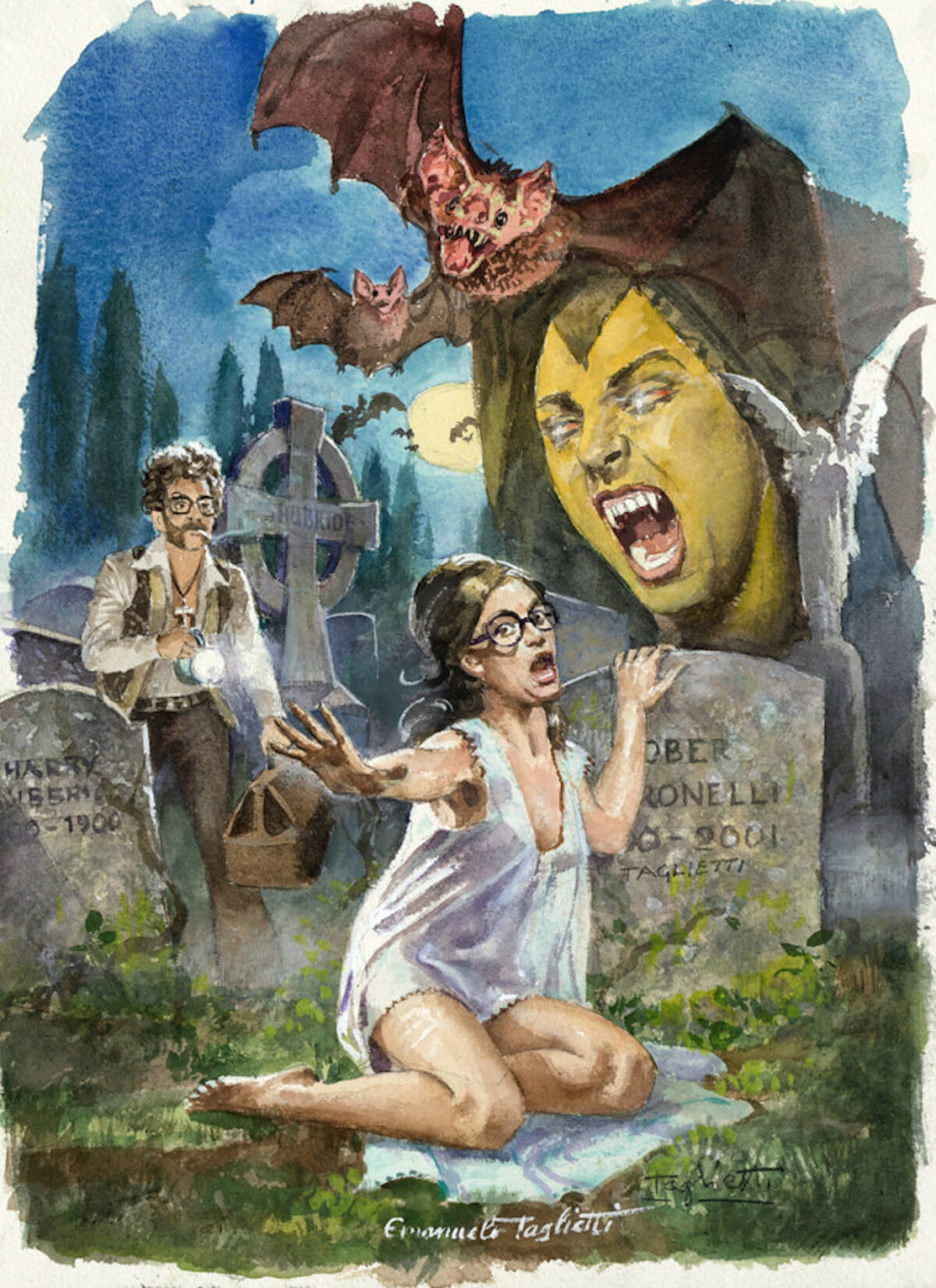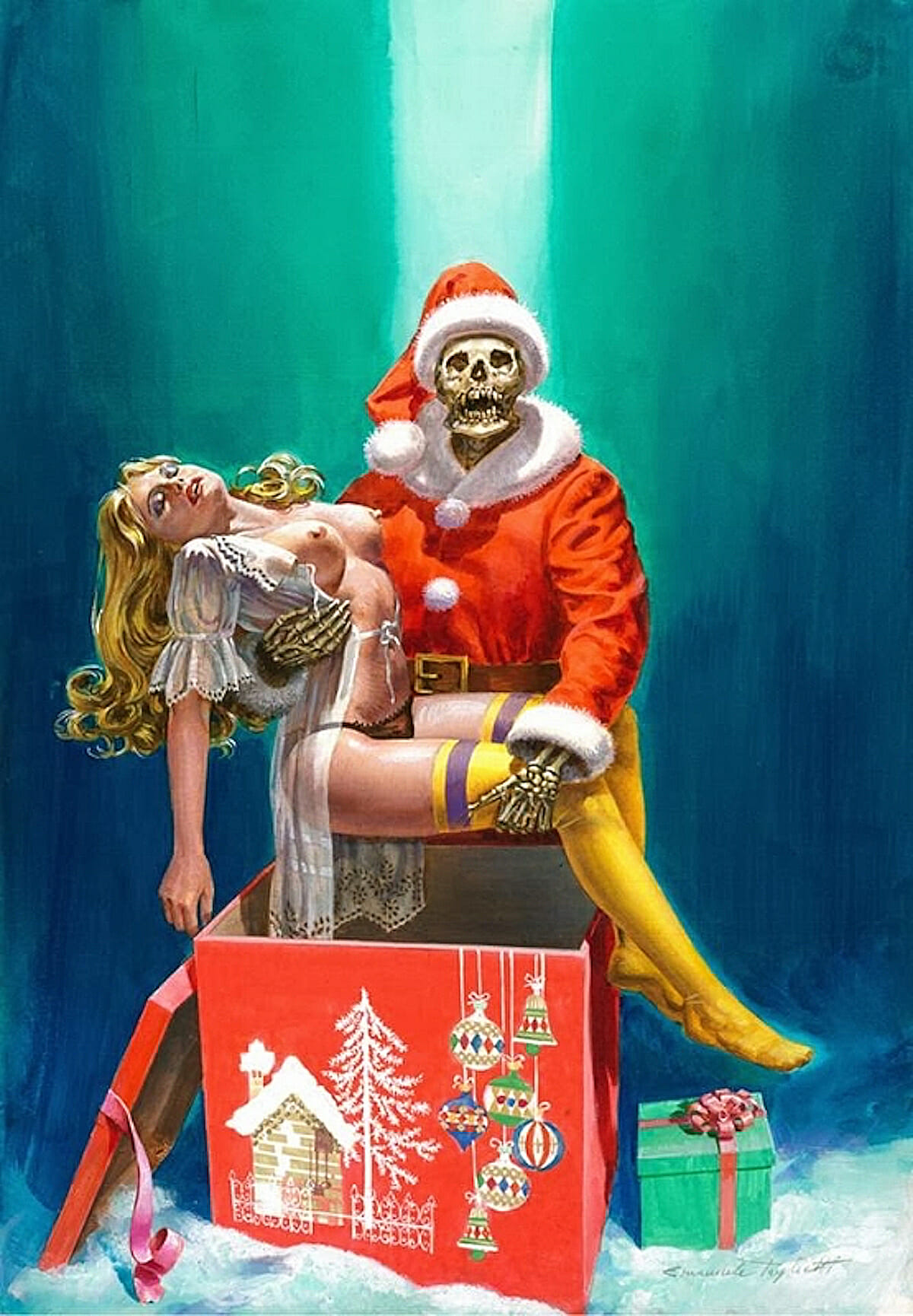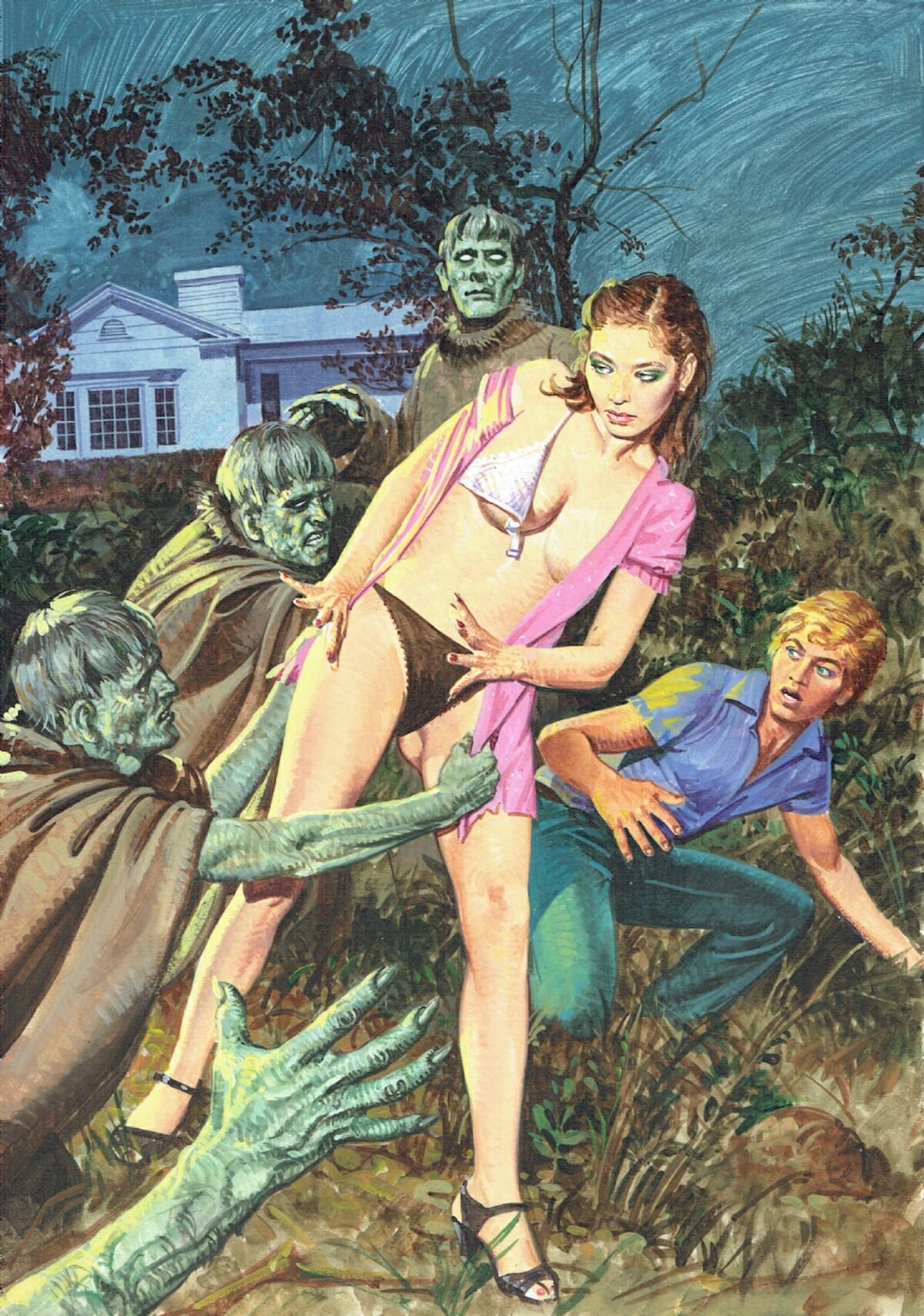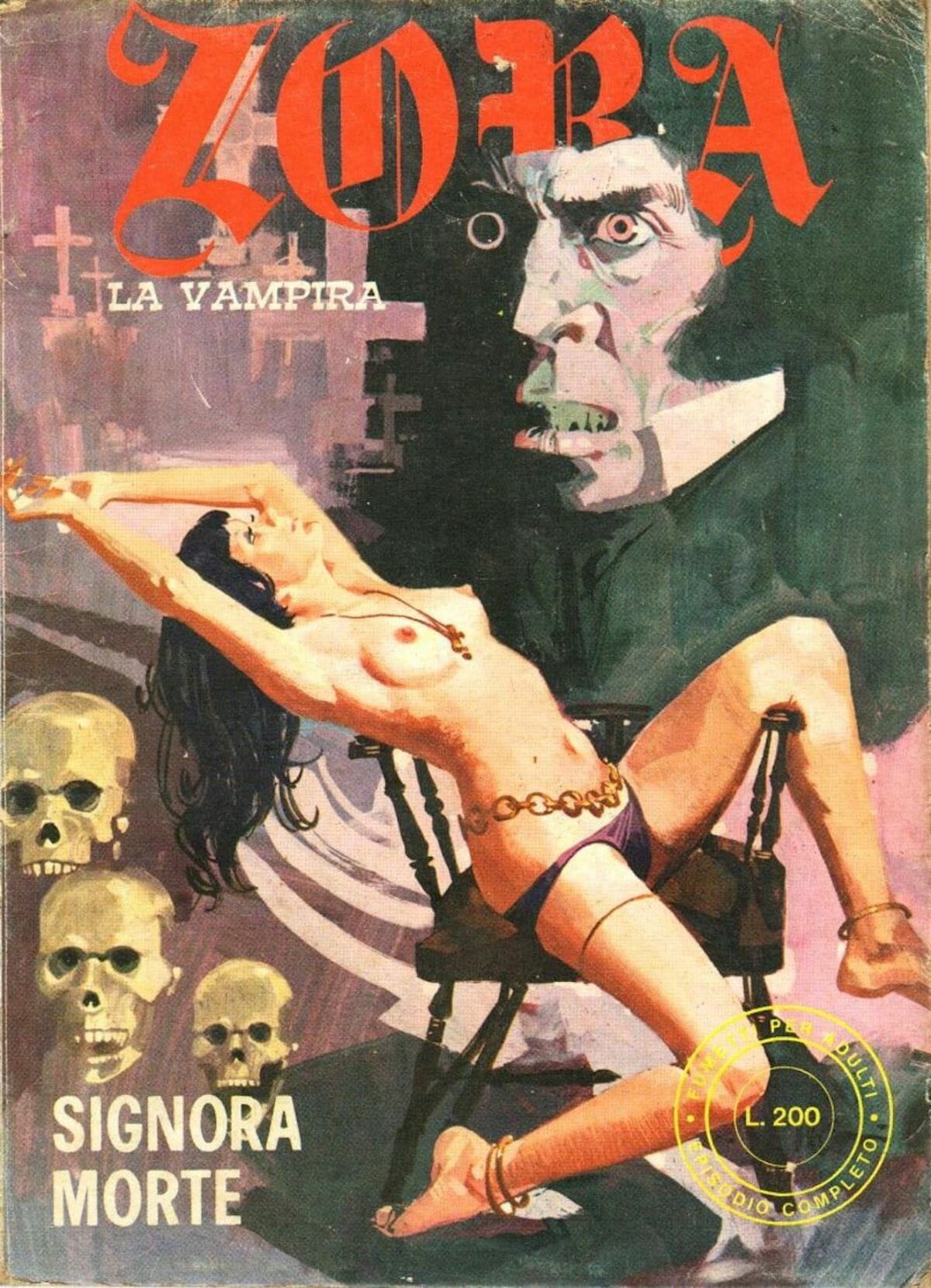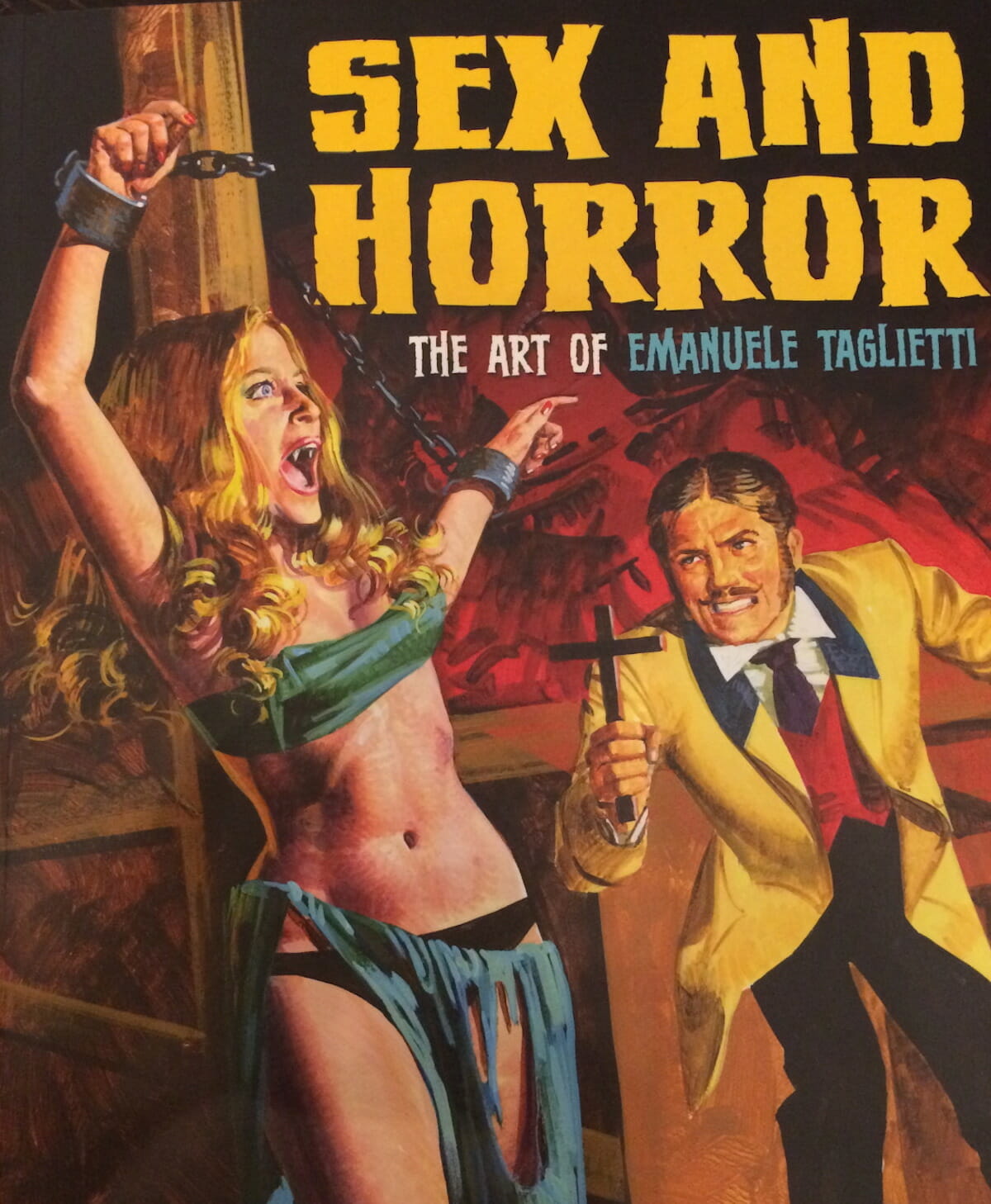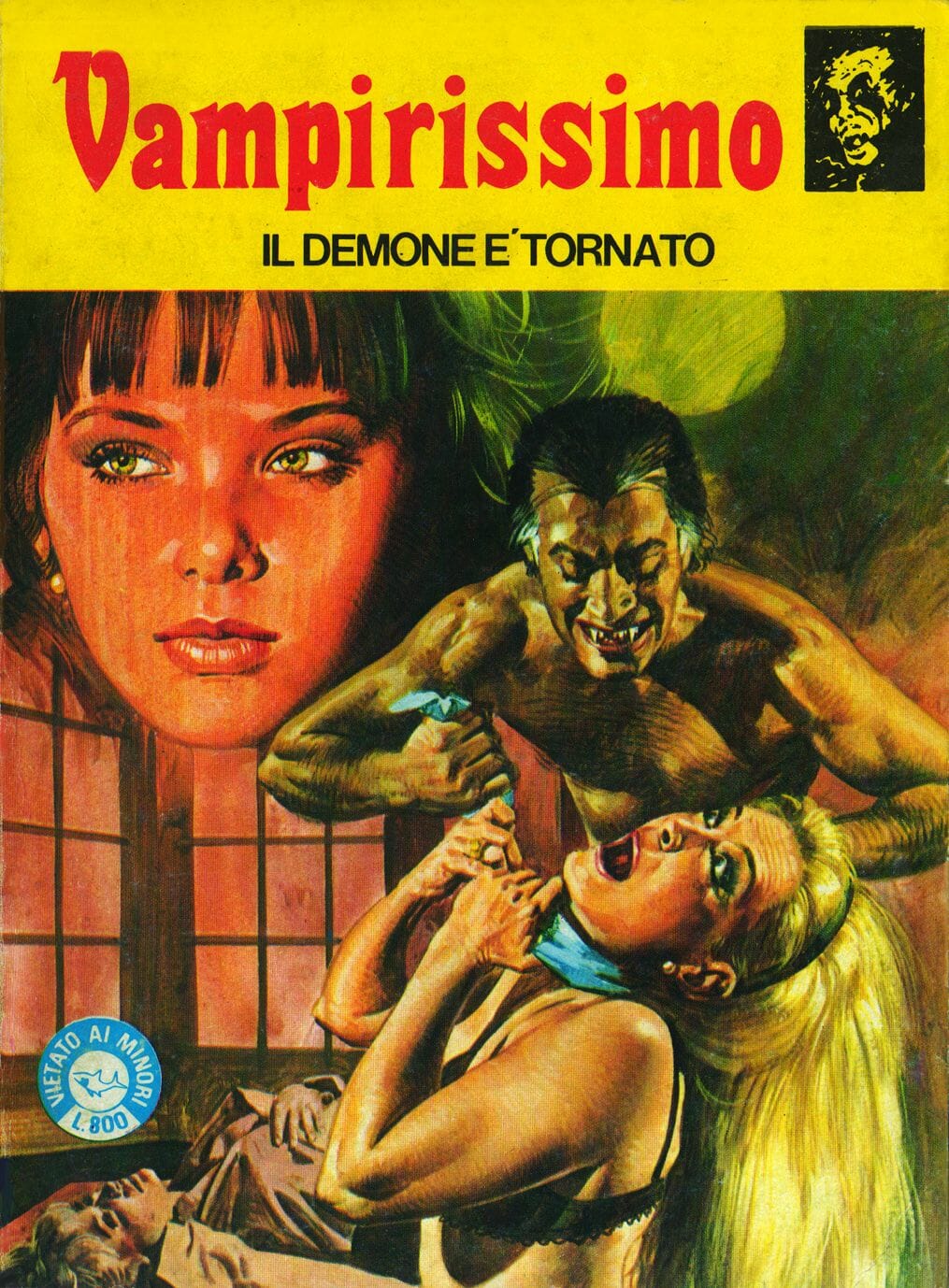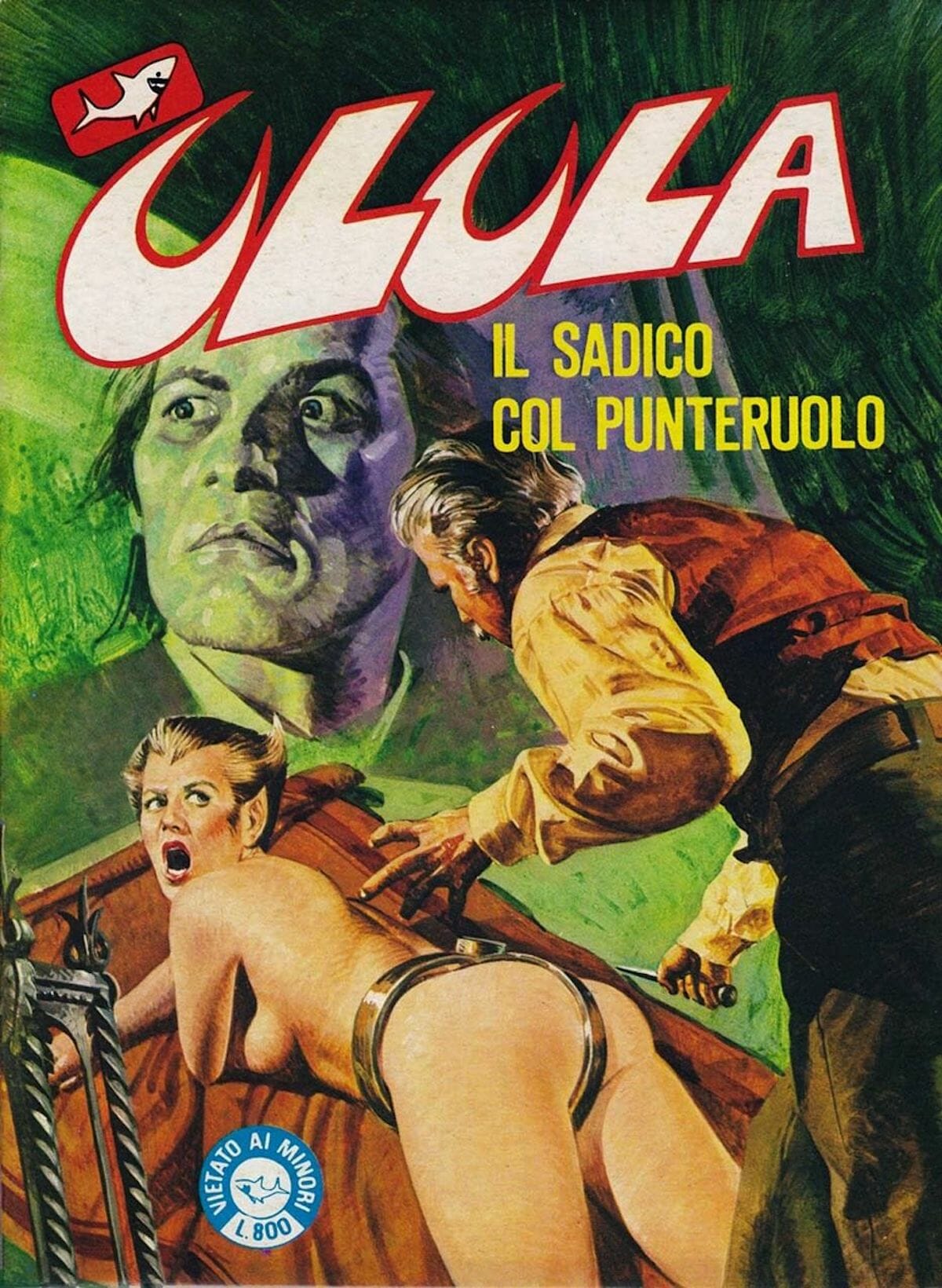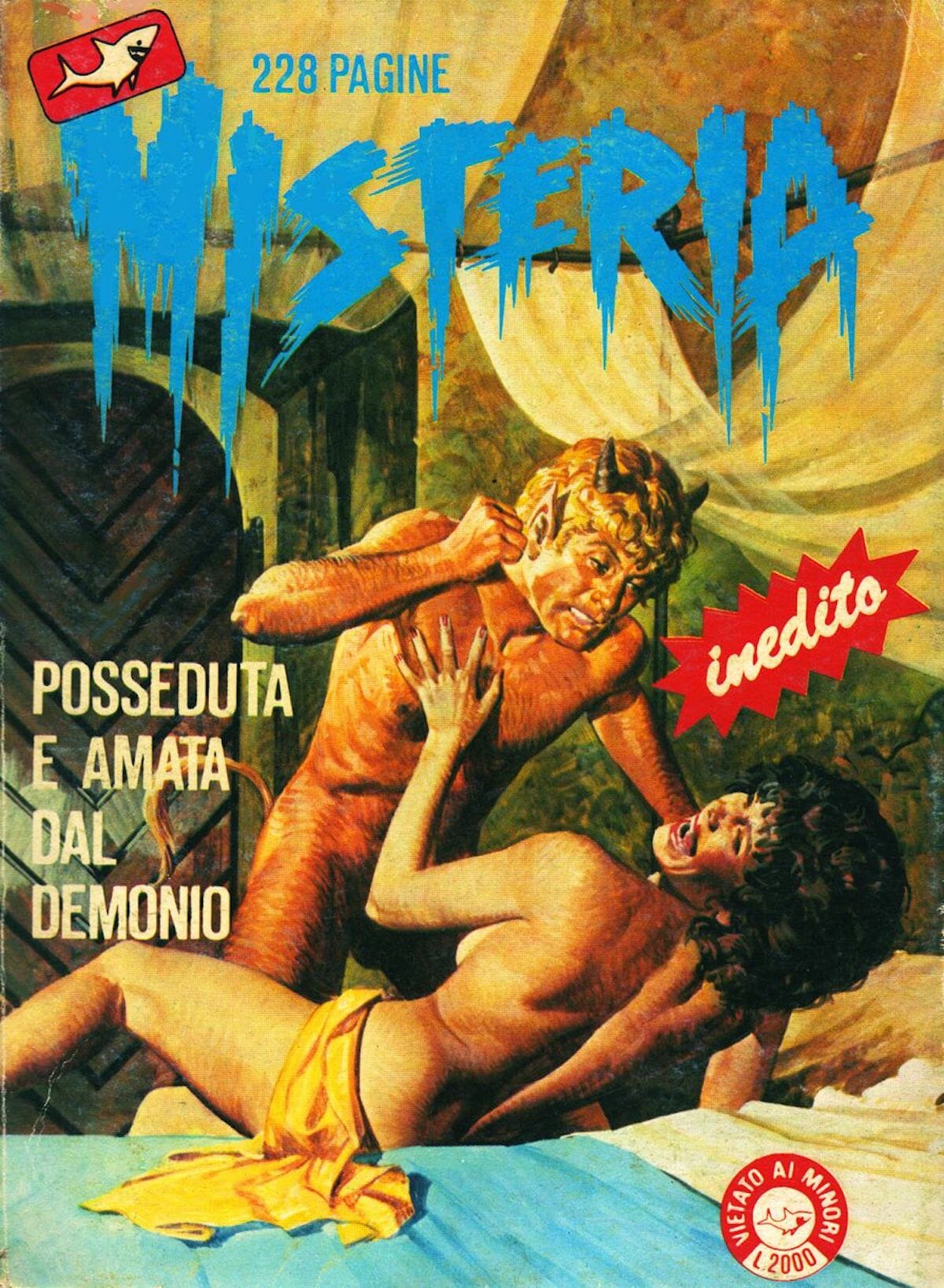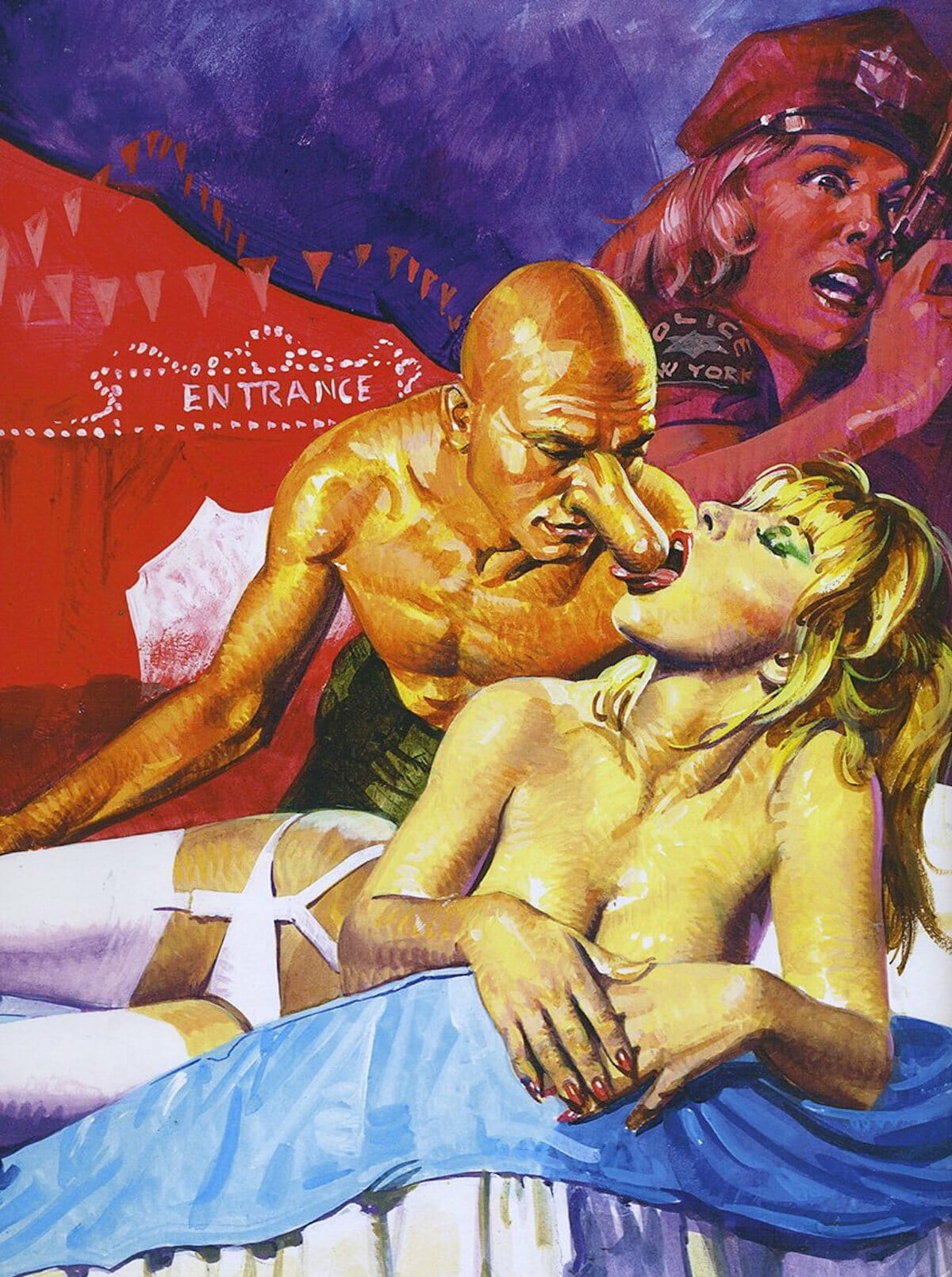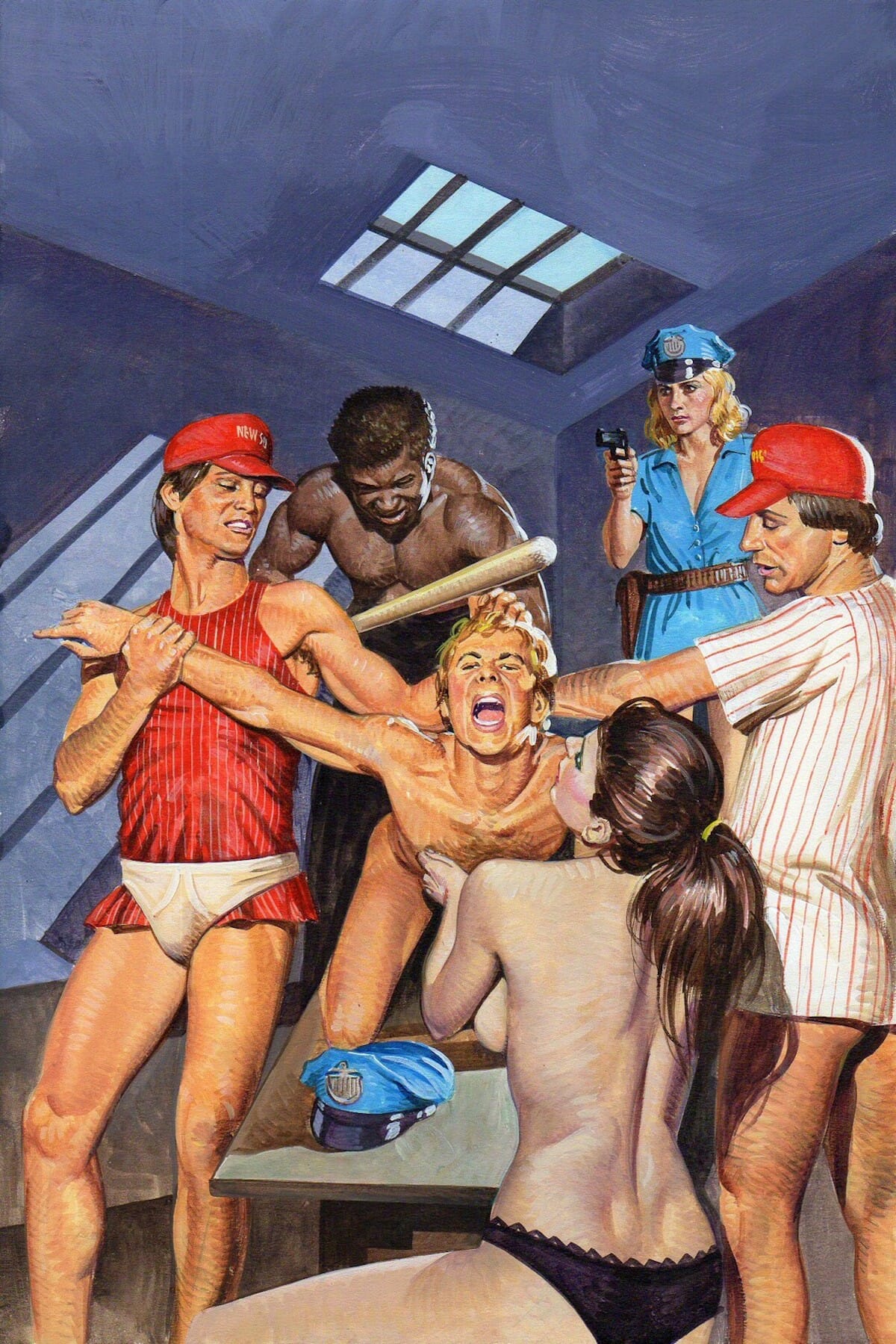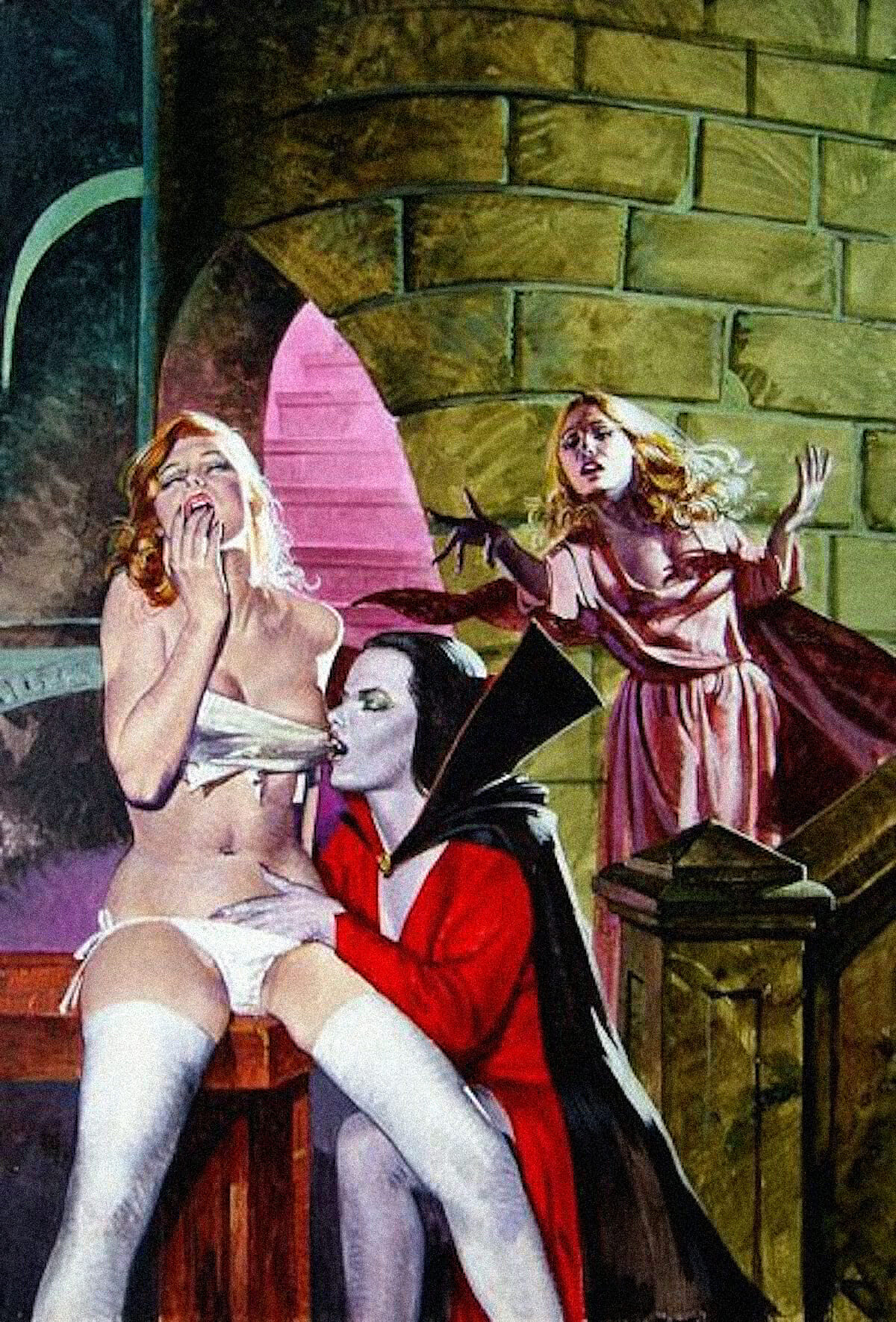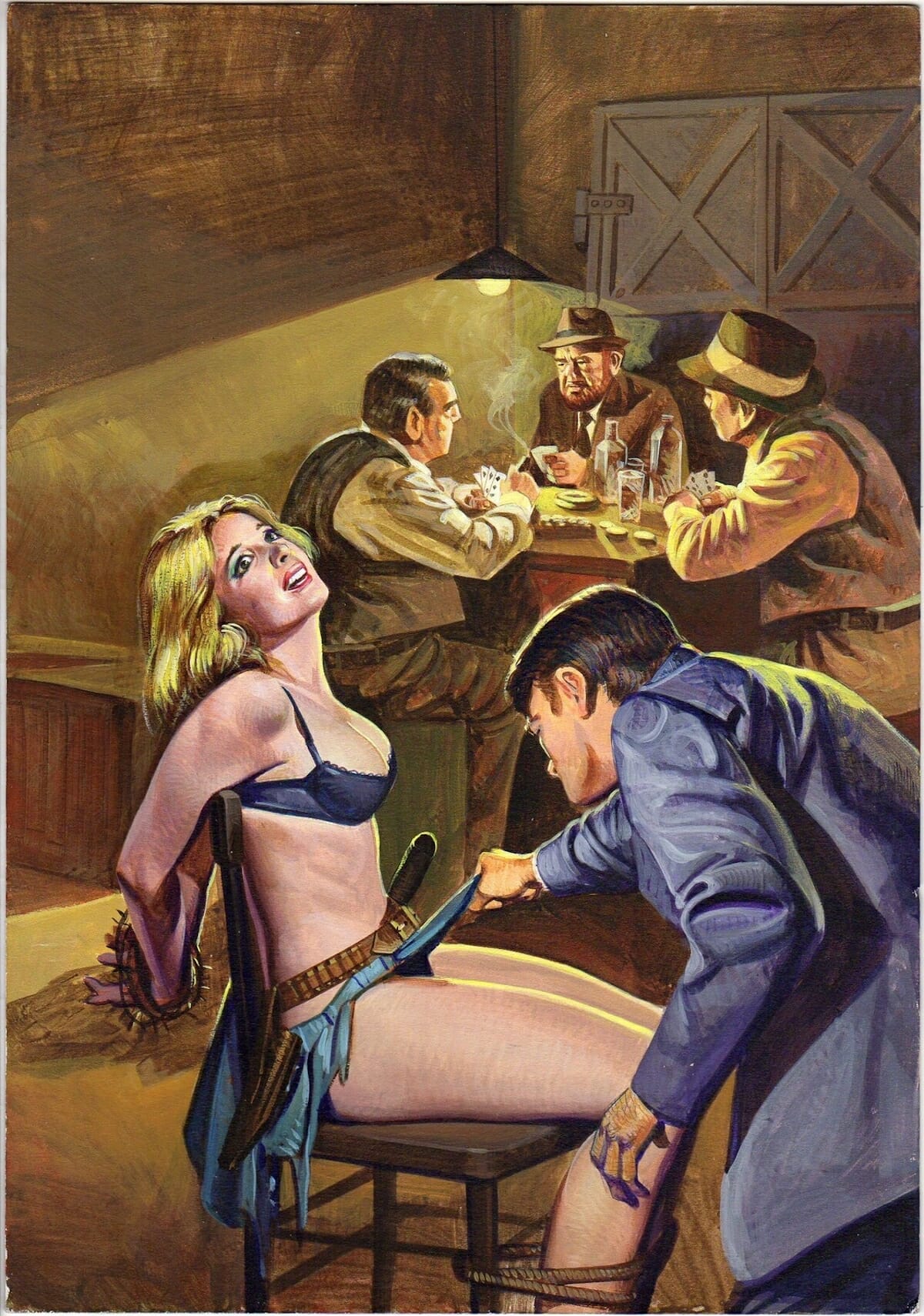It should be of no surprise that the 1970s birthed a whole new brand of horror that included more than it’s fair share of nudity, and thus a wonderfully confusing mix of horror and sex appeal. But comics hadn’t really caught up with film yet, and audiences were then stuck with the satisfying, but ultimately exhausting brand of similar horror from Marvel and DC Comics of the era. Vampires, mummies, swamp things, and ghouls galore! Italian horror, however, had been right on schedule with the American sensibility of combining eroticism and well-placed (which is not to say “tasteful” by any means) nudity alongside ghastly imagery. In fact, the “sexy fumetti” fever had really begun to take house and managed to combine the suspiciously similar feelings of arousal and fear of the unknown (or undead!) into a mold of what now marks one of the most scandalous and remarkably unapologetic periods of pulp art history — and with a large part of it in thanks to none other than artist Emanuele Taglietti.
Born in 1943 in Ferrara, Italy to a family of artists and decorators, Taglietti spent a life around theater, film, and design before attending the Experimental Centre for Cinematography in Rome. Having worked for famed Italian director Federico Fellini on films such as Juliet of the Spirits , as well as Dino Risi’s Dirty Weekend, it’s an understatement to say that Taglietti’s eye for class, camp, and horror is of the upmost pedigree. Moving into his career as an illustrator for the digest-sized fumetti comics — whose themes were already based squarely in the realm of violence, sex, and dirty dealings— became responsible for having painted over 500 covers of pulp fiction books, including Sukia, 44 Magnum, Belzeba, and Zora the Vampire. While his capabilities spanned far beyond any artist creating pulp art at the time, he is best known for the unsettling creative — and effortlessly lurid — combination of zombies, vampires, and other creatures that go bump in the night alongside scantily clad, and occasionally nude, beautiful women. With the weakening of the Italian comics market in the early 1990s, Taglietti began to work as an oil painter and teacher of decoration; even now still continuing to work in watercolors and on the occasional comic cover, citing in a 2018 interview just how he felt about continuing his work after all these years —
“Work is not a sacrifice, on the contrary, it is a continuous search. What I have done is always too little, sometimes I think that more could be done and that is why I continue to paint with commitment.”
As far as the art of pulp fiction goes, there’s no need to look further for your niche (and hilariously sexploitative) horror interests than the profoundly stunning and persistently lewd eye of Emanuele Taglietti.

